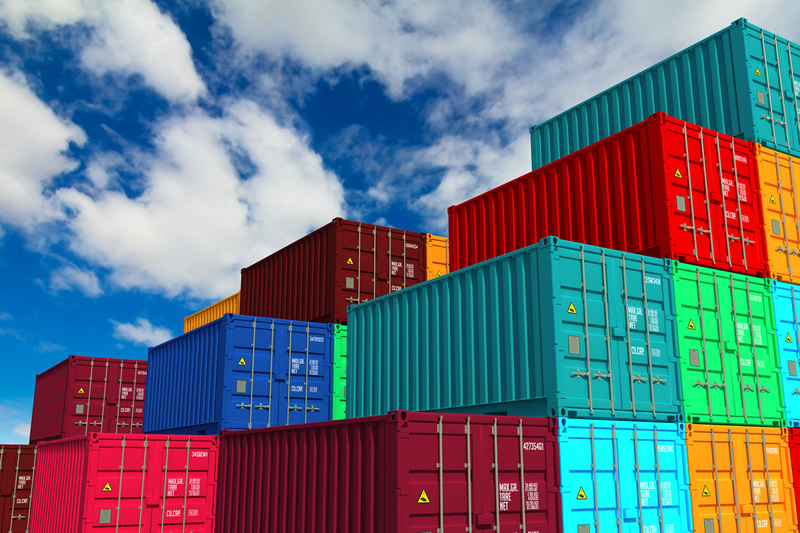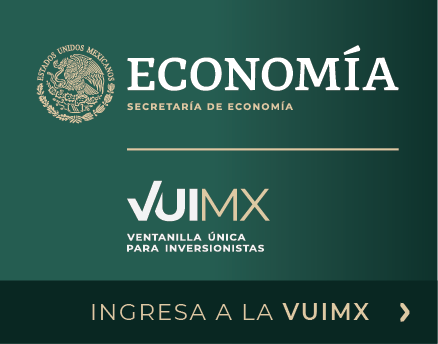Banobras makes available to investors and interested parties an informational section on nearshoring in Mexico. The information presented in this section is a compilation of official communications and consultation materials from various external sources, which are the responsibility of their respective issuers. Therefore, the information contained in this section does not reflect the position or opinion of Banobras.
- Decree Amending, Adding and Repealing Various Provisions of the Customs Law (November 19, 2025).
What is nearshoring?
“Nearshoring” refers to the process of geographically adjusting the production and supply chains of one or more industries by relocating them to locations close to the end consumers of goods. This practice involves transferring business operations to nearby countries with the aim of facilitating the movement of goods, reducing transportation costs, and mitigating operational risks, while ensuring the availability of marketable products.
The trend towards nearshoring leads to the adaptation of infrastructure to market needs, generating investments in transportation, logistics, and industrial parks, which fosters economic growth and job creation.
There are various factors that can encourage or facilitate this practice for international companies or suppliers, including:
- Integration and competitiveness of the local manufacturing industry (supply chain and value chains).
- Availability of infrastructure and investment in research and development.
- Transparency, simplification of procedures, and efforts to combat corruption.
- Qualification and ongoing training of human capital.
- Promoting sustainability as an integral part of the business model.
- Availability of efficient and competitive energy.
- Modern and high-quality infrastructure to facilitate logistics and public services related to industry and commerce.

Why Mexico?
Due to its geographic location, it becomes an ideal location for businesses looking to access the North American market, especially since the entry into force of the North American Free Trade Agreement (NAFTA) in 1994 and its evolution into the United States-Mexico-Canada Agreement (USMCA) in 2020. Its proximity to the United States and Canada has fostered the exchange of goods and services, making North America the largest free trade area in the world 1
According to the Undersecretary of Foreign Trade of the Ministry of Economy, in the document “Invest in Mexico,” the three countries trade approximately $15 million dolars with the world every minute. As a result of the USMCA, companies setting up in Mexico will have access to more than:
million consumers within Mexico.
million potential consumers in the United States and Canada.
With a solid and open economy, Mexico stands out for its stability, openness to international trade, and resilience to global economic fluctuations. Its extensive network of trade agreements, combined with a competitive business environment, promotes the integration of value and production chains, resulting in shorter delivery times and lower transportation costs. This positions Mexico among the top 10 countries most attractive for foreign direct investment.2
Under a regulatory framework that supports investment and entrepreneurship, simplifies procedures, protects intellectual property, and promotes innovation, Mexico has successfully attracted numerous foreign companies. Additionally, advanced technological and communications infrastructure facilitates the integration of business operations and access to global markets.
The country is considered a market with great potential and human capital due to its young, well-trained, and competitive workforce, with strong expertise in engineering, technology, and manufacturing. Educational institutions and training programs ensure a steady flow of qualified talent aligned with industry needs.
As a result, Mexico stands out as an attractive destination for investment in infrastructure, with projects ranging from the modernization of ports and airports to the expansion of transportation and energy networks. Increasing investment in infrastructure enhances connectivity and operational efficiency, benefiting companies that choose to establish their operations in the country.
More information about the national transportation system can be found in the following images:
1 International Monetary Fund, 2023
2 World Investment Report 2024, United Nations Conference on Trade and Development (UNCTAD)
How to invest in Mexico?
Information and resources to learn about general aspects that contribute to decision-making for investing in infrastructure or relocation in Mexico:
- Planning Documents that detail the national strategy for the country’s infrastructure development.
- Organizations and Processes for evaluation, prioritization, bidding, and control for project development.
- Long-term Financing Sources for infrastructure projects.
- General regulations for mixed investment projects.
- Assistance to Foreign Investors through Mexico’s network of embassies and consulates.
In addition, the Ministry of Economy, as part of its investment attraction and promotion policy, established a model for support, guidance, and follow-up for domestic and foreign investors: the one stop shop for Investors (VUI MX). This is a public and free mechanism for contact and guidance in planning or establishing investments in Mexico.
Among the information provided by VUI MX are state-specific fact sheets that contain relevant details on key investment aspects, such as infrastructure, potential sectors, Mexican talent, and the availability of other goods and services, organized by geographic location. These fact sheets are designed to give investors a clear and comprehensive view of sectoral investment opportunities, thereby facilitating decision-making and, in some cases, offering an attractive package of tax incentives (spanish version).
Public Sector
Banobras promotes investment in infrastructure by channeling resources through technical assistance to governments and their financing programs of basic infrastructure, energy, communications, and transportation infrastructure. This facilitates the development of various economic activities across all regions of the country. Infrastructure projects and public services provide a physical platform and last-mile services essential for the efficient performance of industrial activities, reaffirming the commitment to ensure that companies arriving in the country due to nearshoring have all the necessary services to establish their industries.
According to the Ministry of Finance and Public Credit, the collaborative effort between the private sector and the public sector will address the needs and challenges posed by the relocation processes of companies. Both sectors must work together to create a favorable business environment, invest in workforce skills, and promote innovation.
Mexico is in an ideal position to consolidate and extend its positive economic results. In this context, nearshoring represents an opportunity for the country to establish itself as a leading player in the international market and leverage the trends in the reconfiguration of global value chains.3
3 SHCP, Press Release No. 27: Mexico will be able to address nearshoring challenges through the joint efforts of the public sector and private sector: Ramírez de la O
Official Statements:
All press releases are in spanish
2025
- Decree Amending, Adding and Repealing Various Provisions of the Customs Law (November 19, 2025).
- DOF: DECREE modifying the Tariff of the Law on General Import and Export Taxes”. “Tarifa” se traduce como “Tariff” y “Ley de los Impuestos Generales de Importación y de Exportación” se traduce como “Law on General Import and Export Taxes (November 11, 2025).
- DOF: DECREE establishing guidelines for action in identifying public procurement procedures that must be conducted under the coverage of commercial treaties, as well as regarding national content. (October 31, 2025).
- President Claudia Sheinbaum presents the Mexico Plan to members of the World Economic Forum. (October 8, 2025).
- Agreement amending the decree by which the Ministry of Economy issues general rules and criteria on Foreign Trade (September 2, 2025).
- AGREEMENT amending the decree issuing the Guidelines for the Economic Development Poles for Well-being.(August, 2025)
- AGREEMENT issuing the Declaration of the Economic Development Pole for Well-being Huamantla, Tlaxcala.(August, 2025)
- AGREEMENT issuing the Declaration of the Economic Development Pole for Well-being Nezahualcóyotl, State of Mexico.(August, 2025)
- AGREEMENT issuing the Declaration of the Circular Economy Development Pole for Well-being, Parque Hidalgo. (August, 2025)
- DOF: AGREEMENT issuing the Guidelines for the implementation of the Decree granting tax benefits in the Circular Economy Development Poles for Well-being. (July, 2025)
- DOF: DECREE granting tax benefits in the Circular Economy Development Poles for Well-being. (July, 2025)
- DOF: AGREEMENT issuing the Declaration of the Economic Development Pole for Well-being “Parque Industrial Bajío,” Michoacán. (July, 2025)
- Plan México: President Claudia Sheinbaum launches the first 15 Economic Development Poles for Well-being across 14 states. (June, 2025)
- DOF: DECREE to promote investment within national territory, aimed at strengthening the development of the pharmaceutical industry, the production of health supplies, and the advancement of national scientific research. (June, 2025)
- DOF: DECREE granting tax incentives in the Economic Development Poles for Well-being. (May, 2025)
- DOF: CALL for international public bidding for the 30-year concession No. LPIBI-013AYH-PODEBI-3-2025 for the establishment of the “Tapachula II Development Pole for Well-being.” (May, 2025)
- DOF: AGREEMENT announcing the certification marks HECHO EN MÉXICO and MADE IN MEXICO and issuing their rules of use. (February, 2025)
- Government of Mexico: Plan México, First Draft “Poles for Well-being.” (January, 2025)
- DOF: DECREE granting tax incentives to support the national strategy known as “Plan México,” aimed at promoting new investments, encouraging dual-training programs, and boosting innovation. (January, 2025)
2024
- SEP: The country prepares the Mexican talent required by nearshoring and the interconnected world.
- Presidency: President Claudia Sheinbaum presents Regional Economic Development and Relocation Advisory Council (CADERR) as part of Plan Mexico.
- SE: Foreign Direct Investment, Third Quarter 2024
- DOF: Agreement issuing the General Provisions for the operation of the Sole Registry of Investment Projects
- SE: Data Mexico offers Public Announcements of Foreign Investment section.
- SE: “During the first semester of 2024, the private sector has made 143 public announcements with an expectation of foreign investment.”
- SHCP “Mexico will be able to meet the challenges of nearshoring with the joint work of the public sector and IP”
- SE: “The private sector has made 93 investment announcements of more than 36 billion dollars”.
- SRE: Forum on nearshoring is held within the framework of the XXXV Meeting of Ambassadors and Consuls of Mexico.
Consultation Documents:
2024
- Ministry of Economy: Invest in Mexico
- EGADE: Nearshoring and its potential impact on the economy of Mexico in 2024 (spanish version)
- UNAM: Nearshoring “The opportunity for a new economic and social development for Mexico” (spanish version)
- IMCO: Nearshoring: The impact on foreign direct investment (spanish version)
2023
- Deloitte: Nearshoring in Mexico
- PWC: Nearshoring: A strategy to improve competitiveness and resilience in the supply chain (spanish version)
- EY: Discover the benefits your company has in Mexico with nearshoring (spanish version)
- KPMG:Incentives and challenges of nearshoring in Mexico: How to attract more investments to Mexico? (spanish version)
- BBVA: How is Nearshoring going? Ongoing evidence of a bittersweet progress
- BBVA: Nearshoring: Banks monitor
2022
- CEPAL: Mexico in the factory of North America and nearshoring (spanish version)







